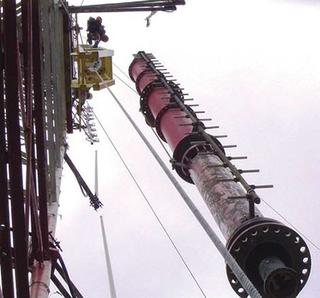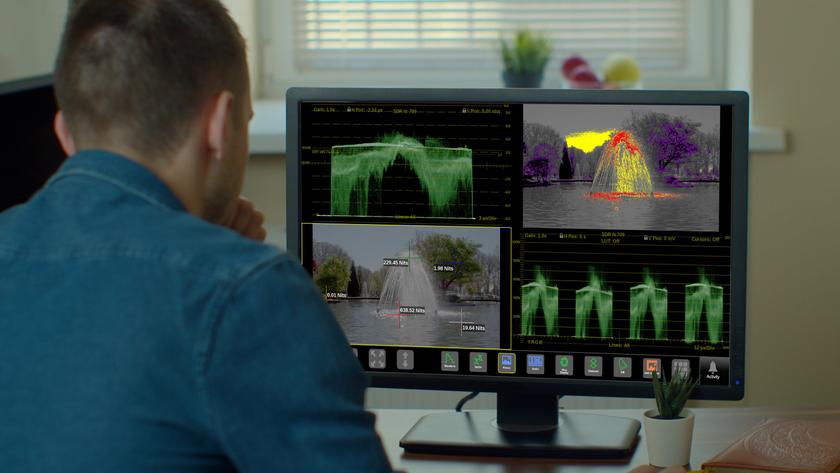Repack Madness

WASHINGTON—The FCC has released the Auction Closing and Channel Reassignment Public Notice and files showing auction results, including stations that gave up their spectrum and those being repacked to another channel. These files show stations’ technical parameters and coverage on the new channels. Files also show the date they can start testing on the new channel provided testing can be coordinated with other stations impacted by the move. The “Linked Station Sets” are available on the same web page. The deadlines for completing the move to the new channels are also shown.
CHANNEL-CHANGE CONUNDRUM
Trip Ericson outlines a set of repacking reports and tools he’s assembled at his Rabbitears blog.
Engineers viewing the lists may be wondering why they have to change channels when their original channel is being assigned to another station in the same market. I think I’ve figured out why this is happening, at least at UHF.
As I described in my last column, the FCC uses dipole factor to determine a station’s protected contour and field strength. The result is stations on higher UHF channels require higher ERP than stations on lower UHF channels to provide the same coverage area. In a congested area, moving a UHF station to a lower channel will reduce its ERP and thus its field strength inside its contour. The lower ERP also means the station will cause less interference to other stations.
Consider this hypothetical case: station “A” on channel 20 and station “B” on channel 40, both with 1,000 kW ERP and non-directional antennas. The FCC moves station “A” to channel 21. Because it is already at 1,000 kW, its coverage and protection will shrink slightly as the required service threshold changes from 39.36 dBµV/m to 39.46 dBµV/m but it won’t cause more interference. Station “B” is now moved to channel 20, but instead of 1,000 kW it is assigned 655 kW ERP as the required field strength dropped from 41.2 dBµV/m to 39.36 dBµV/m. This lower field strength on channel 20 may now allow the FCC’s program to slip in another station on channel 19 or perhaps open channel 20 for use in another market.
Because interference is determined by the D/U (Desired/Undesired) ratio, stations that received lower ERP levels as a result of moving to a lower channel may be able to negotiate with stations on adjacent channels to regain lost power. If these stations also had ERP reductions, I’d hope they would cooperate and increase their power allowing all of them to regain their original signal strength. The antennas most viewers use at UHF have less gain at lower UHF channels, wiping out any dipole factor advantage.
In-market channel swaps may also have occurred as a result of different antenna patterns and different station locations. For stations on adjacent channels not at the same transmitter site, changing channels could reduce interference from one station and allow more interference from another, maintaining the FCC’s goal of minimizing coverage loss from repacking. In other cases the FCC’s software may have found putting stations moving to high-VHF from UHF on channels 8 to 12 and moving existing higher power maximized VHF stations to channels 7 and 13 where only one adjacent channel has to be protected allows tighter packing.
Some channel changes may have occurred to find room for stations in adjacent markets. A partial example of this is evident in the Rabbitears data for New York City and Hartford, Conn. WCBS is moving from channel 33 to channel 36, and WFSB is also moving from channel 33 to channel 36. Other stations in the northeast are also impacted.
Rabbitears now includes tools that can be used to figure out why these stations ended up on the channels they did. Start with the Repack Channel Assignments to find if a stations move is linked to other stations’ moves. The Linked Station Set number is in the “LSS” column. Click on it to see a list and map of all the stations in that set. The Rabbitears “Map for Repack Plan on Channel” is great way to see how channels are allocated in a given area. Enter a channel and the map will display all stations on that channel and adjacent channels. The “Map for Repack Plan on Channel 36” shows how tightly packed the channels are in the northeast. Click on the flag at each stations site to see a link to the “Repack Checker”, which will show what channel that station can use and the impact of the selected station on other channels.
Channel 36 is in a “sweet spot” because only one adjacent channel has to be protected. Channel 14 also has only one adjacent channel to consider, but comes with a major disadvantage.
As UHF stations are squeezed into channels below 37, it isn’t surprising some stations will end up on channel 14. The 450-470 MHz land-mobile band is assigned nationwide so unless the channel 14 stations’ transmitter sites are in remote areas, far away from two-way radio repeaters, there are likely to be problems. A total of 33 stations will have to move to channel 14 and some of these are in major markets where there is a lot of activity in the 450-470 MHz band. Full-power stations will be moving to channel 14 in San Jose Calif, Denver, Washington, D.C., Phoenix, and San Antonio unless they can find an alternative channel. In markets where channel 14 and 15 are both assigned, passive intermodulation may create interference in the land-mobile band that can’t be fixed by filtering.
Interference could delay the repack in markets where these channels are used. The FCC recognizes the issues and costs with channel 14 – there is a check box on the reimbursement Form 399 if the station is assigned channel 14, but I’m not sure the intermodulation issues (which Charles Rhodes has expertly described in this magazine multiple times) between channel 14 and 15 and other users in the 450-470 MHz band have been recognized.
ZOMBIE OR ‘LOWFER’—WHICH IS WORSE?
The FCC allowed station owners to sell their spectrum in the auction but keep the license for a future channel-sharing agreement. These stations, having a license but no spectrum or sharing partner, have been termed “zombie stations.” The zombies are on the move, searching for stations they can share channels with or, if the FCC allows, an opportunity to sell their license to someone who has spectrum. The zombies will soon be joined by LPTV and translator stations, which the FCC recently allowed to enter into spectrum sharing agreements with full power and Class A stations, as well as other LPTV and translator stations.

The good news for the zombies (and displaced LPTVs) is that if they find a host (sharer) they may be able to maintain good or improved over-the-air coverage on a UHF or high-VHF channel. The 17 “lowfers,” those stations that gave up their UHF or high-VHF station to move to low-VHF, are likely to lose most of their over-the-air coverage. They can multicast their programming on another station, but not channel share.
I wrote several articles about the problems with low-VHF during the DTV transition. Googling will bring up some of them, as well as stories about WBBM’s problems with channel 3 in Chicago. Briefly, the problem is that to be efficient, antennas need to be huge (a half wavelength at channel 2 is almost 9 feet!). Indoor antennas are useless because noise from household appliances with motors, switching power supplies, and other devices will wipe out the DTV signal. Ignition noise from passing cars or trucks and lightning storms anywhere in the vicinity will interrupt reception even with a good outdoor antenna.
Please let me know if you have repack or other items you’d like me to cover! Email me at dlung@transmitter.com.
See also:
New Low-VHF DTV Stations Causing PSIP Problems (June 2014)
Solving VHF DTV Reception Problems (April 2009)
Low-Band VHF DTV Revisited (May 2004)
This story has been updated from its previous version. The paragraph starting with "Rabbitears now includes" has been added.
Get the TV Tech Newsletter
The professional video industry's #1 source for news, trends and product and tech information. Sign up below.

Doug Lung is one of America's foremost authorities on broadcast RF technology. As vice president of Broadcast Technology for NBCUniversal Local, H. Douglas Lung leads NBC and Telemundo-owned stations’ RF and transmission affairs, including microwave, radars, satellite uplinks, and FCC technical filings. Beginning his career in 1976 at KSCI in Los Angeles, Lung has nearly 50 years of experience in broadcast television engineering. Beginning in 1985, he led the engineering department for what was to become the Telemundo network and station group, assisting in the design, construction and installation of the company’s broadcast and cable facilities. Other projects include work on the launch of Hawaii’s first UHF TV station, the rollout and testing of the ATSC mobile-handheld standard, and software development related to the incentive auction TV spectrum repack. A longtime columnist for TV Technology, Doug is also a regular contributor to IEEE Broadcast Technology. He is the recipient of the 2023 NAB Television Engineering Award. He also received a Tech Leadership Award from TV Tech publisher Future plc in 2021 and is a member of the IEEE Broadcast Technology Society and the Society of Broadcast Engineers.











